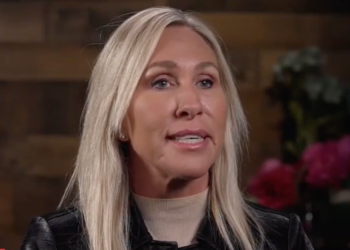A Vibrant Community for New York’s Seniors
On a chilly fall afternoon in Far Rockaway, Queens, Deborah Otts, 75, parked her wheelchair in front of her computer...
‘Who Killed Santa Claus?’: The Night Before Christmas in Occupied France
Scarier than “How the Grinch Stole Christmas,” “Who Killed Santa Claus?” is scarcely less creepy than “Bad Santa.” At once...
‘The dam is breaking’: MTG says Trump’s ‘iron grip’ on the GOP is weakening
U.S. Rep. Marjorie Taylor Greene (R-Ga.) says “the dam is breaking” on President Donald Trump’s popularity and many Republican Party...
Why Do Movies Keep Repeating the Same Joke About the Afterlife?
“Is this hell?” a woman named Joan asks in the movie “Eternity.” Her question is reasonable: She is suffering from...
Why Warner Bros. Discovery’s board says shareholders should reject Paramount’s bid and go with Netflix
Warner Bros. Discovery CEO David Zaslav didn't choose the offer from Paramount Skydance and CEO David Ellison. Leon Bennett/GA/The Hollywood...
A Roar of Motorcycles and the Terrifying Night of a Mass Kidnapping
At first, Stephen Samuel thought he was dreaming. He heard voices and banging inside the dormitory at the Catholic school...
People Are Paying to Get Their Chatbots High on ‘Drugs’
Petter Ruddwall knows the idea of AIs becoming sentient and seeking to get high with code-based “drugs” seems “stupid.” But...
Worried about the AI spending boom? Here’s some historical context.
The year 1929 is a yellow caution light constantly flashing in the national memory. In his March 4 Inaugural Address,...
The law that is trapping America in the past
Megan Jenkins is director of strategic research at Pacific Legal Foundation, where Paige Gilliard is an attorney in the environment...
L.A.’s hydrants ran dry during the fires. Residents are still demanding solutions
As the flames of the Palisades fire licked at his home, Ricardo Kawamura stood in his front yard watching smoke...














